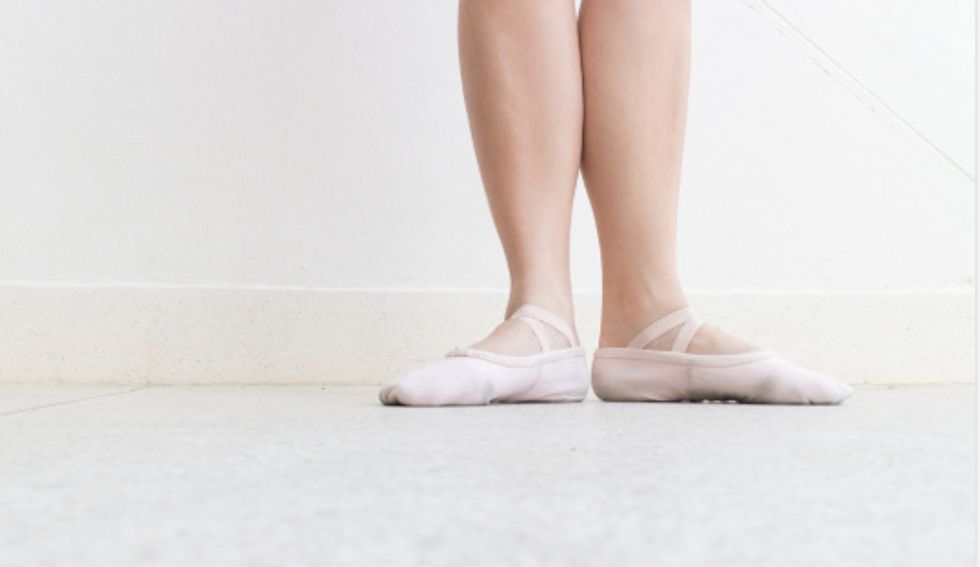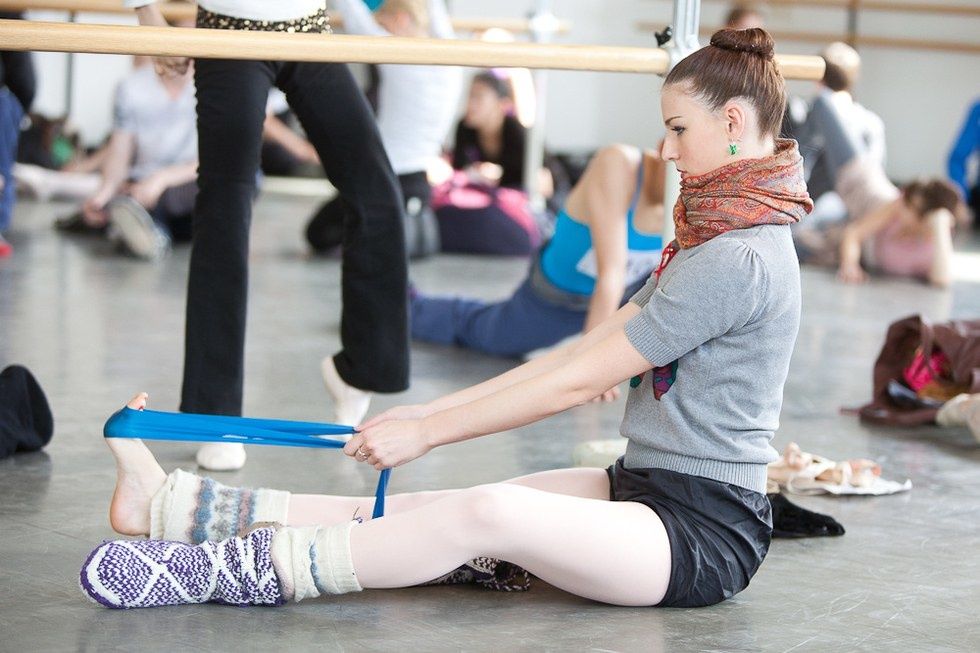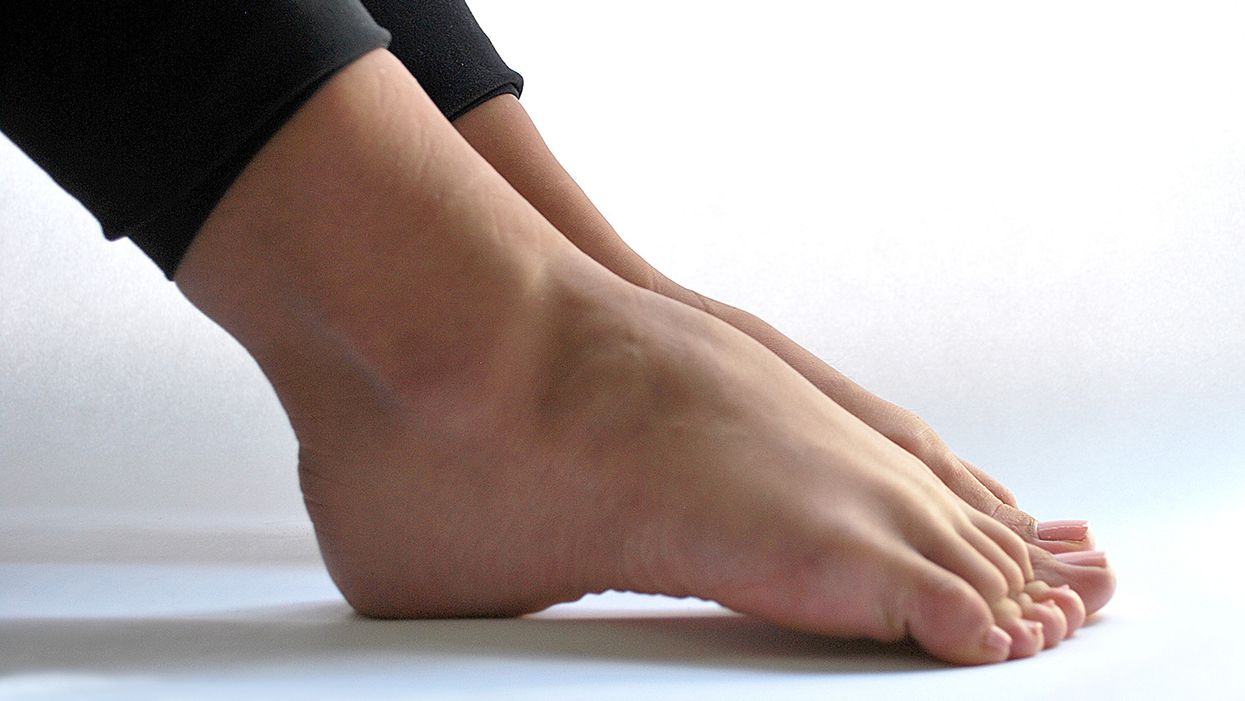How to Prevent and Treat Foot Arch Pain, According to Podiatrists
Sore arches may be one of the peskiest pain spots dancers deal with. This small area on the bottom of your feet may seem minor, but it actually does a lot of work: Your arches are what allow your feet to support the weight of your entire body.
While any sharp, unbearable pain should always be checked out by a doctor, a dull ache after a particularly long rehearsal can usually be alleviated by giving your feet the extra care they need. Here, two podiatrists weigh in on what causes arch pain and how you can manage it.
Why Arch Pain Happens
Arch pain in dancers is commonly triggered by overuse of the intrinsic foot muscles in the sole of the foot. “Properly strengthening the muscles surrounding this area will prevent fatigue, and thus soreness,” says Atlanta-based podiatrist Dr. Frank Sinkoe.
Another culprit could be tendonitis of the peroneal tendon on the outer side of the foot, instigated by forcing turnout, Sinkoe says. This tendon, which attaches to the underside of the foot, can aggravate the arch if you’re not properly engaging your turnout muscles in the hips, and instead forcing it in your feet.

Dr. Thomas Novella, a Manhattan-based podiatrist who specializes in dance injuries, notes that weak calves may get fatigued early in class, causing the muscles in your toes to pick up the slack. When this happens, you’ll likely feel the after-effect in your arches.
How You Can Prevent It
To avoid arch pain, make sure the surrounding muscles are strong and stable. Sinkoe recommends intrinsic foot strengthening exercises like relevés in shank-less pointe shoes, and flexing and pointing the toes using the resistance of a Thera-Band. He also suggests practicing exercises that target the external hip rotators, to help strengthen them enough to properly engage when you turn out.

Matthew Murphy for Pointe
Novella recommends the foot doming exercise to keep your toes strong. “It’s a difficult exercise to master, but one that I believe is necessary for all dancers,” he says. You can also try barefoot single-leg relevés on a half foam roller (with the flat part on the floor) to strengthen your calves.
Proper static stretching and self-myofascial release can also do wonders for pain. Sinkoe advises using a foam roller on the calf and outer calf muscles for 30 seconds. Whenever you feel a trigger point, hold the foam roller on that spot for an additional 30 seconds. Then, standing next to a wall, place the foot against it, with toes pointing upwards, for 30 seconds on each side. If you want to stretch the outer calf, do this with the toes pointing upward and inward for 30 seconds. “But be sure not to overstretch,” Sinkoe says. “Usually one repetition on each side is all that is necessary.” Over-stretching the calves can damage the Achilles, warns Novella.
The Best Way to Treat It
So what can you do if you’re already experiencing arch pain?
Don’t push through the pain—give your body the rest it needs. While dancing, pay close attention to your turnout and make sure you’re only rotating as much as your hips allow. And work on strengthening the surrounding muscles so your arches don’t have to over-compensate.
Wearing proper footwear outside the studio can also make a big difference. “A running shoe with a supportive outer-sole but flexibility at the ball of the foot is ideal for someone experiencing pain,” Sinkoe says. Novella adds that dancers should also look for extra support, like laces, and a firm, fitted heel area. He warns that completely flat shoes often lead to arch discomfort. “But there is no better shoe than the one you are pain-free in,” he says, so find what works for you.
Novella often advises dancers to rub a tennis, lacrosse or spiky massage ball onto the bottom of the foot for a minute once or twice a day. “This causes some inflammation in the area that brings in mending scar tissue,” he says. You can also apply a topical anti-inflammatory gel on the area, as long as it’s used very sparingly.
Above all, remember that the arches of your feet are a sensitive area that hold a lot of weight, so they should always be treated with care.




